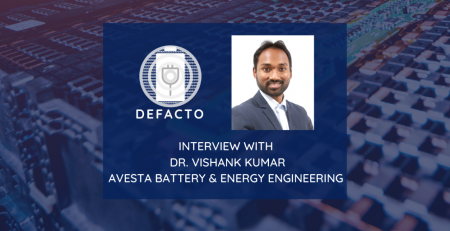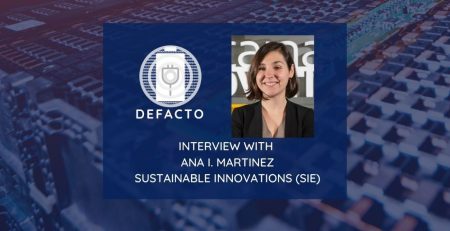Supporting a Europe-wide turnaround to a greener energy policy – Interview with the German Aerospace Center (DLR)
Dr. Martin Lautenschlaeger, from the German Aerospace Center (DLR) speaks on this interview about the main role of DLR in the DEFACTO project, their expectations and the work they will carry out on modelling and simulation of electrolyte filling process.
Q: What is the main role of DLR in DEFACTO?
A: The German Aerospace Center (DLR) is the national aeronautics and space research center of the Federal Republic of Germany. A major research field within DLR’s portfolio is energy technology comprising efficient energy storage and conversion technologies. In this context, the DLR’s Institute of Engineering Thermodynamics participates with two departments in DEFACTO: Computational Electrochemistry (CEC) and Electrochemical Energy Technology (ECE). While CEC has a strong theoretical expertise in modelling and simulation of fuel cells and batteries, ECE’s focus is on production, characterization and diagnostics of electrochemical systems. Both fields of expertise are combined within DEFACTO, where DLR’s main role is the simulative investigation, prediction and optimization of the electrolyte filling process. In this context, CEC will develop a multi-scale simulation method for the intrusion of electrolyte in the pore space of electrode and separator materials. Complementarily, ECE will apply in-operando analytical and electrochemical techniques to support CEC regarding the parameterization and validation of the models.
Q: What are your expectations from the project?
A: Our expectations from DEFACTO are manifold. We are convinced that close collaboration between theoreticians and experimentalists working at prestigious research institutes and leading industrial companies all across Europe facilitates learning from each other and thus will strengthen the expertise of each consortium partner. The combination of competences will provide better understanding of physicochemical and electrochemical interactions in batteries at different length scales. This insight on a new level of detail will, on the one hand, lay the foundation for a knowledge-based design of electrodes and electrolytes, leading to an increased cell performance and battery lifetime. On the other hand, the process development of the cell manufacturing will profit from this insight by improved processing conditions leading to faster processes and a higher product quality. Our goal is that the project results will not be restricted to a single battery technology only, but that the methods developed in DEFACTO will also be applicable to novel battery chemistries. In the long run these new competencies will strengthen the business and technology location Europe and finally support the Europe-wide turnaround to a greener energy policy.
Q: Can you talk about the work you are planning to do on modelling and simulation of electrolyte filling process?
A: The process of electrolyte filling is a sensitive and time critical step in the production of batteries. Electrodes consist of highly porous media with pore sizes down to the nanoscale. However, an imperfect filling of this porous network reduces the electrochemical active surface and the battery capacity tremendously and triggers ageing mechanisms which reduce the battery lifetime. Thus, a detailed understanding of this process is crucial. Up to now, the process parameters used for the filling processes are to a large extent empirical and based on the long-term experience of manufacturers for a specific cell type and battery technology. For a reliable prediction of the filling process physically based simulations of charge and mass transport as well as thermal, kinetic, mechanical effects are highly desirable. To describe all relevant processes with high spatial and temporal resolution on the one hand and manageable computational efforts on the other hand, a multi-scale approach is followed in DEFACTO: On the pore level, the lattice Boltzmann method is used to determine the key physical effects such as the filling dynamics and interfacial effects in complex electrode geometries. On the electrode level, pore network models are applied to study the effective permeability of larger electrode volumes. On the cell level, finally continuum simulations are applied to predict the electrolyte distribution, additionally taking into account macroscopic factors such as the cell geometry, layer thicknesses and the electrolyte distribution surrounding the cell layers. Information from the lower scale approaches are considered as boundary conditions and effective material parameters and thus included in the respective higher scale approach. All in all, we will provide a tool which is computationally efficient and can predict optimized parameter sets for the filling process, which in the end supports the overall optimization for a high-quality battery manufacturing.












Leave a Reply